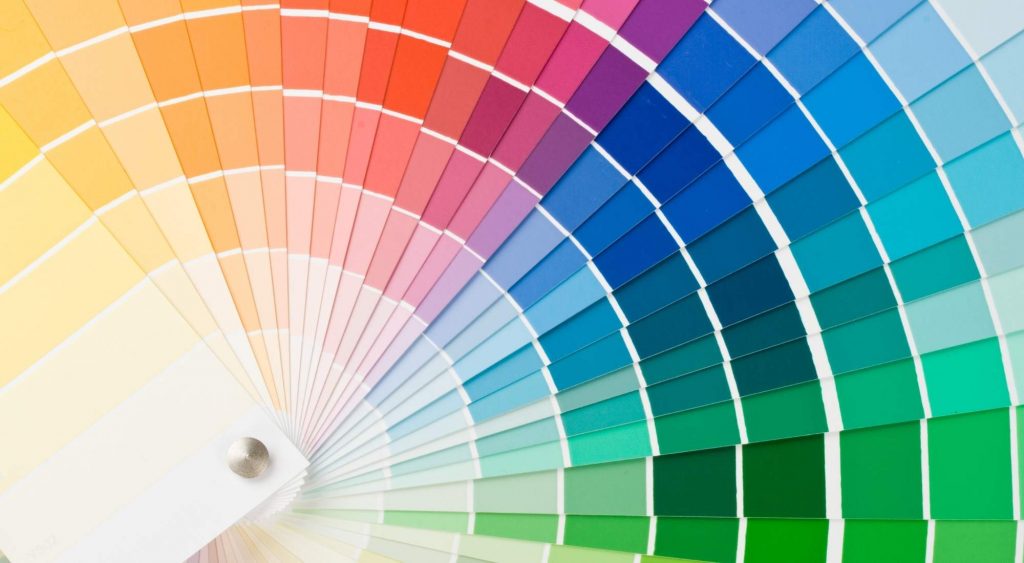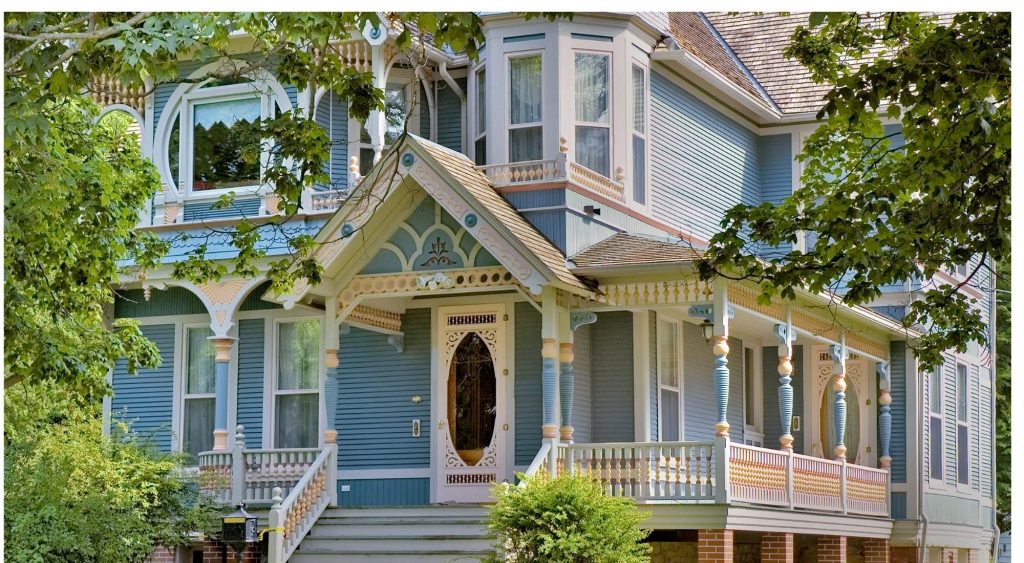No matter how many hours of HGTV you log, you still don’t have a great eye for home design.
Or, maybe, you think you know what you want but aren’t quite confident enough to pull the trigger on such a big project.
No need to quit before you’ve started — we rounded up a list of tips to keep in mind when choosing an exterior paint color so you can get the curb appeal you’re after.
Table of Contents
- How Do I Choose an Exterior Paint Color?
- 9 Tips for Choosing an Exterior Paint Color
- #1: Consider the Non-Painted Surfaces
- #2: Stick With Neutral Colors
- #3: Consider Sun Exposure
- #4: Be Careful With “Whites”
- #5: Consult a Professional Painter
- #6: Use a Color Analyzer
- #7: Don’t Be Afraid to Copy
- #8: Do a Test Run
- #9: Choose the Right Finish
- A1 Paint Removal, Painting & Restoration: We’ve Been Painting Homes Since 1995
How Do I Choose an Exterior Paint Color?
Choosing an exterior paint color will set the tone of your home and is the most public home design decision you’ll make.
Keep the following factors in mind as you’re considering paint colors:
- The size of your home
- The architecture of your home
- The context of your neighborhood
From there …
- Investing in a durable paint
- Playing off the existing permanent exterior materials of your home
- Keeping trim and door colors in mind; and
- Trying out different swatches
… can help ensure you choose the best exterior paint color for your home.
9 Tips for Choosing an Exterior Paint Color
Your home’s exterior paint color can make all the difference in its overall curb appeal.
And, if you’re looking to sell your home, updating your outdoor paint color can add value and impress future buyers.
The bad news? There are hundreds of thousands of exterior paint colors to choose from — how can you be sure you’re picking the best one for your home?
Keep these nine tips in mind as you narrow down your choices and you’ll be able to confidently coat your house in a new shade.
#1: Consider the Non-Painted Surfaces
“Non-painted” surfaces are essentially all of the existing permanent materials that make up the exterior of your home.
Think:
- Unpainted concrete
- Exposed brick
- Existing stone foundations
- Patios
- Accent features or walls
Any exterior paint color you choose must pair well with these existing materials.
To determine what will complement those existing materials, you’ll need to isolate the undertones of the materials.
Undertones may range from:
- Taupe; to
- Pink-beige
- Orange-beige; and even
- Green-beige
Coordinating your new exterior paint color with the existing non-painted surfaces is crucial to avoid clashing colors.
#2: Stick With Neutral Colors
As a general rule of thumb, sticking to a neutral color palette for the exterior of your home is a good idea.
The last thing you’d want is for your house to stick out like a sore thumb to those driving through your neighborhood (and your neighbors to resent you for it), or potential future buyers to be turned away due to an off-putting color.
There are, of course, exceptions to that rule like if:
- Your home is historical
- You live in an area where color is culturally appropriate (ie. Rainbow Row in Charleston or a similar neighborhood)
- The type of architecture of your home lends itself to a brighter color palette
Avoiding “trendy” colors for your home’s exterior is your best bet. Explore accent colors options for your front door.
#3: Consider Sun Exposure
Keep in mind the …
- Climate
- Location; and
- Sun exposure your home gets
… when narrowing down exterior paint options.
Darker paint colors often don’t hold up well against intense sun exposure, so homes in desert climates or those areas that get a lot of sun throughout the year will want to steer clear.
Lighter shades can help to reflect the heat away from a home, keeping it cooler, according to Penn State College of Earth and Mineral Sciences.
Homes in the Pacific Northwest (PNW), however, may opt for a darker shade as the rainy climate is more favorable.
#4: Be Careful With “Whites”
There’s a reason why “neutral” shades are recommended (and used) most for exterior paint.
Colors often look much brighter outside and in direct sunlight than in a home’s interior.
You want to avoid your home looking like a giant reflector after you’ve just paid to have the whole exterior updated.
Don’t worry, though — if you’ve had your heart set on a white home, you don’t have to give it up.
Just pick a color around two or three “steps” below on a fan deck to ensure your white won’t be blinding for neighbors and passersby.
#5: Consult a Professional Painter
There’s a lot of home improvement projects you can try your hand at DIY-ing, but your exterior paint shouldn’t be one of them.
Leave the painting to the experts at A1 Paint Removal, Painting & Restoration.
Our team of inspectors will evaluate your home exterior, taking into account its:
- Age
- Base material; and
- Finish
When you choose A1 Paint Removal, Painting & Restoration for your painting project, we will help you select colors and help you decide on the best finish for your home.
Along with …
- Priming
- Caulking; and
- Painting your home
… we can strip and power wash off old paint off your exterior looks as good as new.
As a family-owned company with over 25 years of experience, we have the skill needed to give you the home exterior you’ve been dreaming of.
#6: Use a Color Analyzer
Using a color analyzer or visualizer can help take the guesswork out of your choice.
Having the ability to see your exterior paint color choices on your own home will without a doubt help you choose your top contenders.
And while we highly suggest using one of these tools, keep in mind that eventually, you’ll want to see the colors on your actual home, too; but more on that later.
Visualizing your options can also save you …
- Time
- Money; and
- Hassle
… if you’re looking to sell your home.
Check your local paint store or visit the App store on your smartphone. There are several color visualizer or analyzer apps available for you to use.
A color analyzer can help you avoid any mistakes (like opting for a shade that’s a little too bright white) and ensure you’re happy with the exterior paint color you settle on.
#7: Don’t Be Afraid to Copy
Normally, we wouldn’t recommend driving around random neighborhoods and looking at people’s houses.
But, when you’re in the market for a new home exterior paint color, it’s a great idea.
Taking photos of not only homes and paint colors you like but also ones that resemble your own is a great place to start or as a way to help you further narrow down some options.
Pay attention to color schemes that look out of place and avoid replicating those mistakes.
And those you do like? Go on and replicate their paint choices. Imitation is the sincerest form of flattery, right?
#8: Do a Test Run
While visualizer and analyzer apps and tools are helpful, it’s essential to see the color options on your home with your own eyes.
Most paint stores offer test sizes of paint colors so you can try them out before purchasing.
Paint some brush-outs of your top three (or top five) onto the sides of your home, as well as near the trim color, to see how they look.
Pro tip — be sure to paint swatches on both the north and south sides of your home. The way the sun hits (and your paint color appears) can vary significantly from one side to the other.
You’ll also want to check how the paint appears during different times of day to better understand what the full effect will be.
Still having trouble? A1 Paint Removal, Painting & Restoration can help you choose the best paint color (and finish) for your home today.
#9: Choose the Right Finish
The paint color is not the only important decision you’ll have to make when it comes to the exterior update of your home.
The paint finish you decide on will determine how long your exterior paint lasts.
Professionals mainly use five types of paint finishes, each with its own pros and cons:
- Flat
- Eggshell
- Satin
- Semi-gloss
- High-gloss
We’ll compare them here so you can best decide which is right for your home’s needs.
Flat
Traditionally, flat paint was the most popular choice for exterior paint.
Today, though, flat paint isn’t used as much, due to its:
- Matte
- Porous
- Susceptibility to fading; and
- Mildew issues
But it shouldn’t be ruled out completely as an option for your home’s exterior.
A flat finish may be a good option if:
- You have an older home
- Your home has wooden siding
- You are looking to hide small siding imperfections
Eggshell
Eggshell makes a great option for exterior paint finishes because of its versatility.
It’s not a flat finish and doesn’t have a high sheen either, which complements a variety of siding types, including:
- HardiePlank
- Wood
- Stucco
- And more
Eggshell finishes are also highly durable and can be easily cleaned with regular power washing.
Any brush strokes or marks from the application won’t be easily seen, making it great at hiding small imperfections in your siding.
Another perk? Precipitation and mild seasonal weather changes won’t affect exterior paint with an eggshell finish.
Satin
Satin paint has an almost stretchy quality to it that allows it to resist peeling and mildew, making it great for exterior trim areas.
Those high-touch surfaces like …
- Overhangs
- Trim boards
- Porch ceilings
- Door frames
- Window sills; and
- Eaves
… are a great place to use a satin finish paint.
A satin finish will bring a nice sheen to your home’s exterior but it won’t be too shiny.
Keep in mind, though, any imperfections, especially in wood siding, will be magnified by a satin finish, so you’ll want to avoid this finish.
Semi-Gloss
Paint with a semi-gloss finish will have a visible shine on your home.
This finish is great for those exterior surfaces that require regular cleaning, like:
- Front or side doors
- Exterior trim
- Gutters
- Shutters
- Railings; or
- Window sills
The glossy quality makes this option very durable, which also means:
- It’s easier to clean
- Can endure harsh weather conditions; and
- Can withstand excess moisture
However, if you have small imperfections in your home’s exterior like cracks or chips, a semi-gloss paint finish won’t work to hide them.
High-Gloss
Looking to make your home really stand out on the block? Consider a high-gloss finish for your exterior paint.
This finish is extremely durable, but you’ll want to avoid painting your whole house with it. Because of the high-sheen effect, a home with a high-gloss sheen would give off an almost plastic look.
Moreover, the more sheen your finish has, the more it will highlight any imperfections in your siding.
Instead, use a high-gloss finish to highlight your home’s features like:
- Trims
- Doors
- Shutters
- Railings
- Window frames; or
- Unique architectural features
You’ll want to pair a high-gloss finish with either a semi-gloss or satin paint finish to accent its qualities.
A1 Can Help You Choose the Perfect Exterior Paint Color for Your HomeA1 Can Help You Choose the Perfect Exterior Paint Color for Your Home
Family-owned and operated since 1995, we at A1 Paint Removal, Painting & Restoration are ready to give your home the curb appeal you’re after.
When you choose A1 Paint Removal, Painting & Restoration for your painting project, we will:
- Help you select colors
- Help you choose the right finish; and
- Take your timeline and accessibility into account
Our team will consult you at every step of the process from prepping to painting to finishing to make sure the entire process is completed with your needs and desires in mind.
Contact us to get a free estimate for your exterior paint needs.








